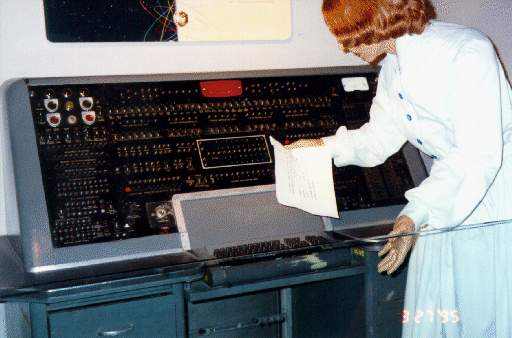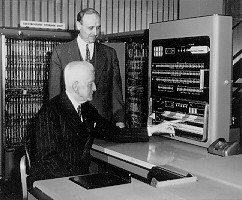In 1951 the UNIVAC-1 became the first commercially available electronic computer. This computer was designed by Eckert and Mauchly (the designers of the ENIAC) and built by the Remington Rand corporation. The first of these computers was delivered to the U.S. Census Bureau.

Between 1951 and 1953 magnetic core memory was developed. This memory consists of tiny ferrite "donuts" that were arranged on a lattice of wires. The polarity of their magnetization could be changed or detected by passing current through the wires. This allowed each lattice point store one "bit" - either 0 or 1. Magnetic core memory was the fastest type of memory until the late 1980's.

In 1953 IBM released the IBM 701, its first business computer.

In 1956 IBM released the IBM 704, successor to the 701. This was the first commercial computer with floating-point hardware and was capable of operating at about 5 kFLOPS (five-thousand Floating-Point Operations Per Second).

In 1957 the first version of the FORTRAN (FORmula TRANslation) language was finished. Begun in 1953 by John Backus at IBM, FORTRAN as specifically designed for scientific programming.
In 1958 the integrated circuit is developed by Jack St. Clare Kilby at Texas Instruments. Integrated circuits place multiple transistors on a single chip, greatly reducing the size and energy requirements of electronic devices.